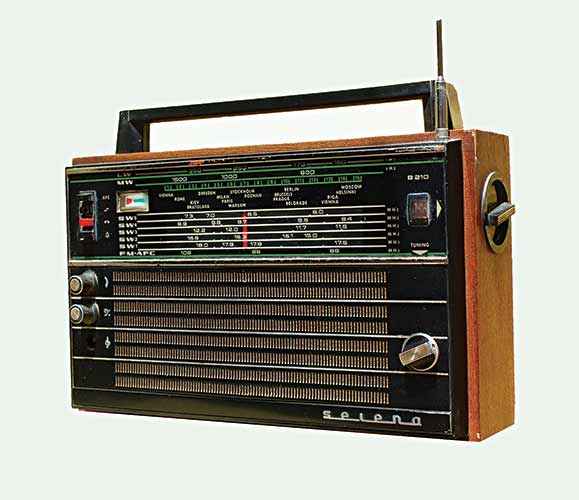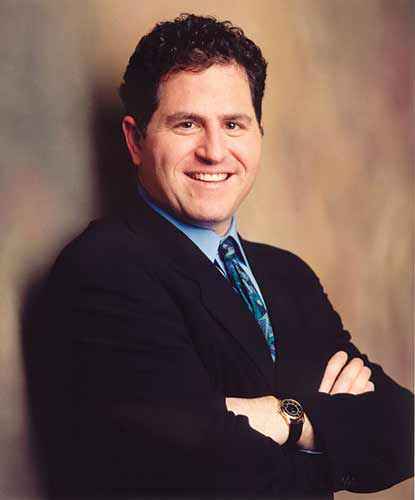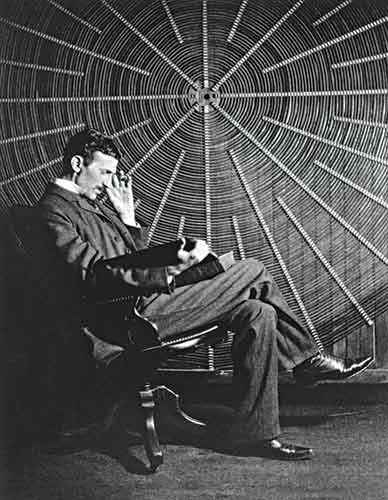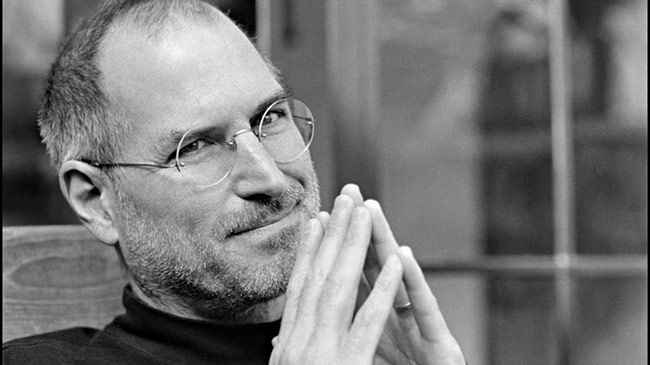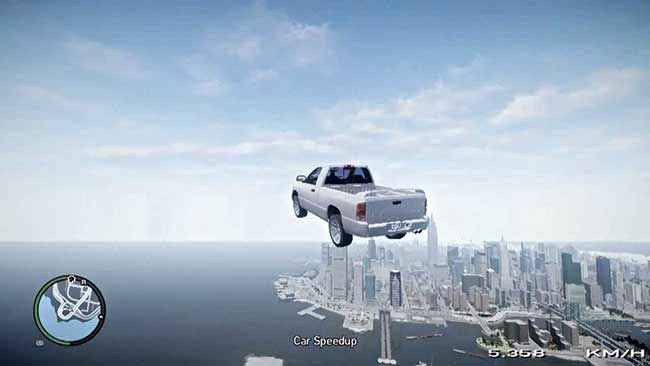15 Technology Predictions That Failed

Some of the biggest gaffes, exaggerations, and misfirings from the world of technology
1. “I think there is a world market for maybe five computers.” —Thomas Watson, chairman of IBM, 1943.
Here’s some food for thought—there are three computers within my line of sight as I write this. To further put things in perspective, 83 million computers have already been sold just this year so far, with the total numbers of personal computers in use having already crossed the 2 billion mark. And while it took 27 years to reach the 1 billion sales mark, it only took 7 to grow from 1 billion to 2 billion. Now let’s be fair, I don’t think anyone in 1943 had any idea that the personal computing industry would blow up the way it has in the last few decades.
And when Thomas Watson said “five computers”, he probably wasn’t talking about the advanced portable computers we know now so much as “five vacuum-tube powered number adding machines that could fill up three rooms and consume an entire city block’s worth of electricity supply”; still, as far as predictions go, this isn’t particularly well-advised.
2. “The wireless music box has no imaginable commercial value. Who would pay for a message sent to nobody in particular?” — David Sarnoff’s associates in response to his urgings for investment in the radio, the 1920s
And David Sarnoff’s associates were never invited to a conference table again. In the US radio penetration currently stands at 59% of the population, behind only TV, and ahead of internet and print. Between 2009-2019, the advertising revenue generated from radio is expected to be around $17bn in the US and around $31bn globally.
Closer to home, the radio industry in India is expected to be worth between Rs. 5000-6000 crores by 2020. Not too bad for a “wireless music box” with “no imaginable commercial value” that “no one would pay for”, right? Alas, if only David’s associates were a little wiser, they would have struck the deal of
the century.
3. “I’d shut Apple down and give the money back to the shareholders.” — Michael Dell, founder and CEO of Dell, 1997
When you’re a competitor, you’re sort of forced to take a contrary position by default. But Michael would have never imagined the ways in which this statement would come back to haunt him. Steve gave Michael some instant karma by mocking the living hell out of him in one of his media appearances following the latter’s statement, adding a prophetic, “We’re coming after you, buddy,” towards the end, and came after him, he did. The rest, as they say, is history: Apple eventually not only crushed Dell, but the entire PC industry as a whole. You can watch the video on YouTube by searching, “Steve Jobs hammers Michael Dell.” In recent years, Michael has repeatedly tried to backtrack on his statement, How ironic that Dell had to go private, after taking a $2 million loan from Microsoft and Michael Dell. Ouch!
4. “Television won’t be able to hold onto any market it captures after the first six months. People will soon get tired of staring at a plywood box.” — Daryl Zanuck, film producer, co-founder of 20th Century Fox, 1946
Daryl Zanuck was one of the most iconic Hollywood film producers of his era, having produced over 165 films, over the course of his career. Though his scorn for this disruptive, incumbent technology is somewhat understandable, the prediction itself is so off the mark that you can’t help but be amused by it. Let’s get some perspective on this. In 2010, an average American spent well over 5 hours sitting in front of the idiot box, suffice to say no one is tired of it—yet. In terms of commercial success, the estimated revenue generated by the US television industry between 2014 and 2015 was around $134bn. Even though TV may finally be witnessing some decline in popularity, thanks largely to the Internet, I think we can all agree that it has had quite a run.
5. “Radio has no future. Heavier-than-air flying machines are impossible. X-rays will prove to be a hoax.” — William Thomson, Lord Kelvin, British scientist, 1899
It’s almost as if someone jokingly challenged Lord Kelvin to intentionally poke fun at three of the greatest scientific ideas of the 20th century, then some rookie journalist jumped the gun and went to press without context, and the noble Lord has been misquoted ever since. It’s won’t be a stretch to say that one could write an entire book on just the applications of radio technology alone; oh wait a minute, someone already has, It’s called the Handbook of Radio and Wireless Technology and happens to be 640 pages long. Coming to the subject of planes, about 102,700 commercial flights are undertaken every day according to rough estimates, and we’re not even talking about the role of airplanes in military strategy around the world. As for X-rays, they happen to be the mainstay of primary diagnosis in the field of medicine worldwide. Severely misinforme? You betcha.
6. “Fooling around with alternating current (AC) is just a waste of time. Nobody will use it, ever.” — Thomas Edison
An unfortunate statement to make, certainly, but Edison had his reasons for making it. Back in the day, two current systems were competing neck and neck for mass adoption in the market: Thomas Edison’s direct current (DC), being promoted by his own Edison Electric Light Company, and Nikolas Tesla’s alternating current (AC), whose patent was sold to George Westinghouse, owner of Westinghouse Electric Corporation and Edison’s commercial rival. The long drawn struggle between the two competing companies and the people behind them came to be known as the “War of currents.” The story gets complicated but the bottom line is that AC won over DC, mainly because the voltage of AC can be modulated to extremely high levels (“Danger: 11000 Volts” signs anyone?) and later stepped down at the point of delivery unlike DC—allowing it to be transmitted over longer distances using thinner, and therefore less costly wires, making the distribution much cheaper.
Even though DC is still extensively used in modern electronic devices such as computers, telephones, automotive systems, and more, Edison would have found little comfort knowing that AC is how the power is really reaching all these devices across the world in the first place.
7. “Nuclear-powered vacuum cleaners will probably be a reality within 10 years.” — Alex Lewyt, President of the Lewyt Vacuum Cleaner Company,
I honestly have so many questions for Mr. Lewyt about this one, but since he’s not alive anymore, I think I’ll have to just throw them out in the open and hope someone else can answer. But first, let’s assume that it is, in fact, possible to make vacuum cleaners that run on power generated by nuclear fission; complete with radioactive fuel, control rods, a cooling chamber, a pressure vessel, and a steam generator. Okay. Now that the little technicalities are out of the way, who or where are the buyers for these fun-size vacuum cleaners? Let’s try to answer this question.
Just what kind of stains are they dealing with that regular electric current from the household supply just won’t cut it anymore? Is it worth risking incinerating a few cities by accident just because you don’t want to scrub a little harder to remove the wine from the carpet? Could there be intelligent life right here on earth? So many questions, but not one satisfactory answer. Oh this wait for discovering the riddles of the universe is killing all of us in the inside.
8. “Before man reaches the moon, your mail will be delivered within hours from New York to Australia by guided missiles. We stand on the threshold of rocket mail.” — Arthur Summerfield, U.S. Postmaster General, 1959
Well, SpaceX is only just figuring out how to reverse land rockets, so I don’t know—maybe we’ll have rocket mail after all. When I first came across this statement made by the then U.S. Postmaster General, I thought he was just indulging in some good old wishful thinking. Then I found a Wikipedia page on “rocket mail” and found out that for a while, they were actually testing rockets to deliver mail, and at one point, even the US Navy got involved. Upon further thought, one could argue the case for rocket mail: It’s possibly the fastest physical way to deliver mail. There’s just one minor concern, rockets do this thing where they can sometimes lose their trajectory and end up levelling an entire city block, at which point you have to stop and ask yourself: “How important is the expedited delivery of mail really?” The idea was finally dropped when they realized that the cost of rocket fuel and the expense of running the operation would never justify the incremental gain in the speed of mail delivered—something even a slightly clued in high school science student would tell you long before you go testing those rockets. The silver lining in this cloud is that eventually Rocketmail did happen, and it was instant, and it was delivered over the Internet, and as far as I can tell, no one’s life was put at risk.
9. “The subscription model of buying music is bankrupt.” — Steve Jobs, 2003
Not too visionary, Steve, not too visionary at all. In 2014, an estimated 41 million people paid for music subscription services, the number having gone up from 8 million in just four years. Last year, the total annual revenue from streaming music hit a record $2.4bn. And streaming music is now the largest contributor of revenue to the music industry at 34.3%, ahead of both downloads (34%) and physical (28.8%). Apple launched its own subscription service called Apple Music last year, which has already acquired one-third the number of subscribers that the market leader Spotify has. In fact, the buzz is that the subscription model is working out so well for Apple that it may soon be discontinuing iTunes digital downloads entirely in favor of the Apple Music subscription model. I guess Apple couldn’t afford to miss the gravy train, even though their supreme deity had publicly spoken it over a decade ago. Must be hard.
10. “Two years from now, spam will be solved.” — Bill Gates at the World Economic Forum, 2004
Hey Bill, I know you’re smart and everything, but please tell that to the Nigerian prince who just emailed me this morning requesting my bank details because he just inherited a few hundred million dollars that he needs to redistribute in multiple accounts across the world to hide it from his own predatory government. I shouldn’t be mocking, I must be getting my share of $7 million any minute now. The mandatory Nigerian prince spam joke aside, spam is still pretty much alive and kicking, although intelligent spam filters try to keep us protected from it. Kaspersky Labs recently estimated that almost as much as 70% of all email is spam. The reason why spam is so pervasive and often difficult to track is because a majority of spam is not sent by the spammer, but by infecting and hijacking the computers of other people like you and I using malware.
11. “Within the next two decades, autos will be made with folding wings.” — Eddie Rickenbacker, pilot, 1924
Just coincidentally, this is the exact same thing I told my dad two decades ago when I was a kid, so I totally get you, Eddie, and I know exactly where you’re coming from. Unfortunately, the world is yet to deliver on our dreams. At that time, Eddie probably had no idea that the world had a probably the most devastating war, in store.
All of the research then went into making bombs, and even car manufacturers joined the war effort, and made guns and tanks, instead of luxury cars, and nobody really spent any time into thinking up a flying car. Even today, we have cars faster than the speed of sound, amphibious cars, but we still don’t have a car with wings. One would think that manufacturers would concentrate all research on flying cars, and completely ignore measly issues like global warming, and the possibibility of species-wide exitinction.
A few small form factor, light-capable machines do exist now, the Akoya amphibious aircraft for instance, which can land on ground, water, and snow without adaptation, has a length of 6.9m, wingspan of just 11m, cruising speed of 210 km/h, and a range of 1250 kms—pretty damn cool!—but it’s still more a plane with wheels than a car with wings.
Can someone please explain to me why we’re building hyperloops and particle colliders and exploring Mars when we can’t even give the masses the simple luxury of a flying car? It’s 2016 already! Come on
12. “We’ll soon buy books and newspapers straight over the Internet. Uh, sure.” — Clifford Stoll, astronomer and author, 1995
It’s one thing to wrongly predict the success or failure of something and completely another thing to sound delightfully snide while doing so. This statement comes from an article published in Newsweek in 1995, very descriptively titled: “The Internet? Bah!”. In the article, Clifford goes on to debunk the hype behind the coming “information superhighway” as “baloney”. However, as an author of a few acclaimed books on hacking and technology, astronomer, and general mad-scientist type—Clifford’s scathing tone was probably rooted more in concern and experience rather than maliciousness. He believed that the Internet was too disorganized and chaotic a database to be of any practical purpose and that online shopping could never replace the personal touch and salesmanship you get in a retail shop. Of course, there were a lot of other things he failed to predict, including the emergence of trackers and algorithms that would keep throwing products in your face all across the Internet till you bought the product out of desperation just so it would leave you alone—who says the Internet doesn’t have salesmanship?
13. “The bomb will never go off. I speak as an expert in explosives.” — Admiral William Leahy, U.S. Atomic Bomb Project
Except that the bombs did go off, Mr. “Expert”, collectively unleashing a blast yield equivalent to 36,000 tons of TNT on the cities of Hiroshima and Nagasaki during WWII. In Hiroshima, almost everything within a blast radius of 1.6 km was completely destroyed due to the immense shock waves generated by the heated X-ray fireball, except for about 50 heavily reinforced, earthquake-resistant buildings—only the frames of which remained standing. Things that escaped the fury of the shockwaves were engulfed by the firestorm that followed and covered an area of 3.2 km. And in case all that wasn’t destructive enough, there was also a burst of intense neutron and gamma radiation that irradiated directly from the fireball at impact. That’s a lot of wreckage created by a bomb that wasn’t even supposed to go off in the first place. As satirist Peter Cook once said, “Experts are the last people to come up with the solution to anything. It would be far better to set up a team of five old idiots to probe matters.”
14. “There’s no chance that the iPhone is going to get any significant market share.” — Steve Ballmer, former chief executive of Microsoft, 2007
One thing you can never blame Steve for is not being entertaining enough. There are literally thousands of articles, videos, and memes online with names like “Steve going crazy on stage” and “the greatest hits of Steve Ballmer”—which is exactly what it sounds like, a compendium of not so smart things Steve has said over the years. Steve also isn’t particularly known for mincing words, though sometimes one wishes he did. After the launch of iPhone 3G, tech analyst Charles Wolf noted that “Apple’s iPhone 3G, introduced in July, is the only reason smartphone growth did not slow in September.” At the time, iPhone represented 16.6% of the entire smartphone market worldwide, second only to Nokia. You were saying, Steve?
15. “That the automobile has practically reached the limit of its development is suggested by the fact that during the past year no improvements of a radical nature have been introduced.” — Scientific American, 1909
Whoa, whoa, whoa… calm down, Scientific American! It’s just 1909 for crying out loud, the days are young for the automotive industry and the future is still out there. You’re going to have things like rear-mounted radar and multi-angle camera systems for hassle-free parking, night vision with pedestrian detection, automatic high-beam control, in-car Internet (you’ll know what the “Internet” is when you get there, it’s great, I promise!), GPS vehicle tracking, the capability to detect whether the driver is fit to drive and initiate vehicle lockdown if needed; and I haven’t even started about the more run-of-the-mill things like anti-lock braking system, electronic brakeforce distribution, carbon fibre car bodies, crumple zones, and automatic transmission. Also, we now have electric cars that not only work well but are crushing the tradition internal combustion engine market. Also, there are driverless cars. Also, there’s a car called Bugatti Chiron that goes up to 464 km/h. I rest my case.
This article was first published in our 15 year Anniversary Special June 2016 issue of Digit magazine. To read Digit's articles first, subscribe here or download the Digit e-magazine app. You could also buy the Anniversary Special June 2016 issue here.


